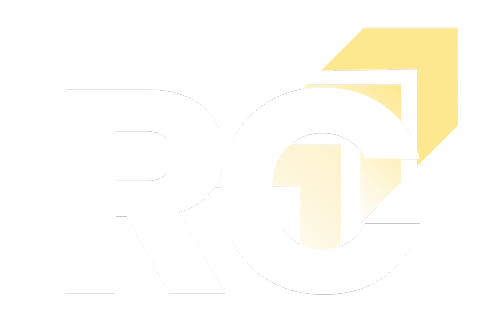Change management has long been a critical capability for organizations, yet by 2025, even the most ambitious initiatives are stumbling more than ever. As companies confront AI-driven disruption, hybrid workforce complexities, and record-high burnout rates, the traditional playbook for orchestrating change is showing cracks. This 1,000‑word deep dive strips away superficial fixes to reveal the four foundational failure points undermining 70% of transformation efforts—and explains why diagnosing these root causes is the essential first step toward real success.
1. Leadership Misalignment: The Silent Killer
Data Spotlight: McKinsey research consistently finds that 70% of change initiatives fail—and misalignment at the leadership level is cited as the top cause. In practice, this misalignment manifests as:
- Conflicting Priorities: C-suite executives launch high-visibility initiatives (AI integration, digital platforms, sustainability goals) without clear sequencing. When competing priorities overlap, resource contention and contradictory directives paralyze teams.
- Accountability Gaps: Middle managers are tasked with delivering results but lack both the decision-making authority and real-time feedback loops to course-correct. A 2024 CEO survey revealed that 58% of managers felt disempowered to escalate issues.
- Perception Disconnect: In an internal poll of 3,000 employees at a global services firm, 65% reported that leadership’s vision “felt out of touch” with daily realities—leading to skepticism and passive resistance.
Diagnosis: When leadership speaks in broad strategic terms but fails to codify clear, shared objectives and ownership models, the disconnect cascades down. Teams fragment into silos, budgets siphon off, and the transformation narrative becomes white noise.

2. Change Saturation and Cognitive Overload
Concept: Change saturation occurs when employees face multiple, concurrent initiatives that overwhelm their cognitive and emotional capacity.
- Meeting Overload: In 2025, the average employee attends 16 change-related meetings per week—a 20% spike from 2023. Constant context switching erodes productivity and amplifies frustration.
- Ghost Projects: Nearly half of all transformation projects lose momentum within two months. Initial enthusiasm gives way to abandonment as employees juggle too many priorities.
- Attrition Spikes: Project managers and specialized roles become attrition hotspots, with turnover rates up to 45% higher than organizational averages.
Diagnosis: Organizations treat change as an endless conveyor belt rather than orchestrated waves. Without deliberate sequencing—balancing impact, urgency, and capacity—teams reach a tipping point where they simply tune out further initiatives.
Key Indicator: Response rates to pulse surveys plummet below 30% in saturated environments, signaling disengagement long before projects officially derail.
3. Over-Reliance on One-Size-Fits-All Frameworks
Observation: Frameworks like Kotter’s 8-Step Model, Prosci’s ADKAR, and Lewin’s Change model remain staples—but in their default forms, they are ill-suited for the hybrid, data-centric demands of modern enterprises.
- Linear vs. Iterative: Classic models presuppose linear phases. Today’s transformations loop through continuous feedback and rapid pivots—yet many organizations cling to static stage gates.
- Generic Templates: Applying frameworks without customization overlooks unique cultural and operational nuances. A financial institution and a software startup in 2025 have vastly different risk profiles and decision cadences, yet many use identical playbooks.
- Feedback Time Lags: Traditional quarterly or biannual change surveys deliver insights too late. Projects advance without adjustment, locking in flawed assumptions.
Diagnosis: Assuming a framework’s reputation ensures success is a recipe for blind spots. Effective change demands adaptive frameworks—modular, data-informed, and continuously recalibrated.
4. Cultural Blindspots: The Unseen Barrier
Insight: Culture is the invisible architecture of an organization. Variable norms, informal networks, and shared beliefs govern how people actually behave—often more powerfully than formal policies.
- Invisible Influencers: Informal leaders—those respected but unnamed—dictate peer sentiment. Overlooking them means missing critical advocates or dissenters.
- Values Clash: When strategic changes conflict with core values (e.g., autonomy in creative teams vs. rigid process controls), employees resist at a subconscious level—masking true objections.
- Story Deficit: Data, metrics, and dashboards without a compelling narrative fail to resonate. Transformations divorced from evocative storytelling struggle to gain emotional buy-in.
Diagnosis: Ignoring cultural undercurrents leads to superficial compliance at best and covert sabotage at worst. Cultural mapping, narrative alignment, and engaging informal networks are prerequisites for genuine adoption.
Conclusion: Diagnosing Before Prescribing
Unless organizations confront these four diagnostic pillars—leadership misalignment, change saturation, rigid frameworks, and cultural blindspots—they will keep recycling the same failed playbooks. Recognize that:
- Diagnosis precedes prescription. You must understand why past efforts stumbled before you can engineer sustainable solutions.
- Context matters. Templates and models have value, but only when tailored to your organization’s unique leadership dynamics, capacity constraints, and cultural fabric.
- Engagement is critical. Early detection of fatigue and misalignment signals you to adjust cadence, communication, and resources—long before projects collapse.
In the next phase of your transformation journey, use these diagnostic insights as the foundation for building targeted, flexible strategies that buck the 70% failure trend.



